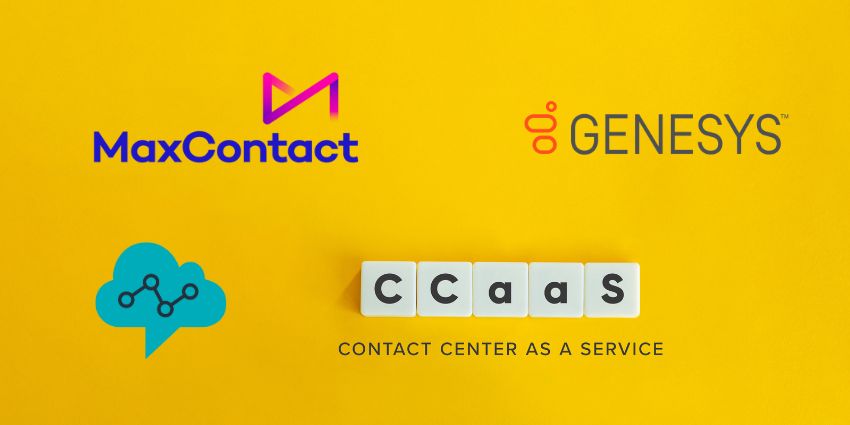As in every sector of telecoms, cloud technology has instigated a major shake up of the contact centre solutions market. With market value predicted to increase from $5bn to $15bn globally by 2021, cloud-based contact centre products and services also represent a major growth opportunity for vendors and resellers alike.
However, given the specialist nature of contact centre solutions, and in particular the sizeable range of software and hardware components they encompass, on-premises deployments remain popular. With telephone endpoints, PC terminals and screens, display boards, network and routing equipment all needed on top of a wide variety of specialist software, many businesses continue to prefer to own and run systems themselves.
Others again are opting for a hybrid blend of cloud and on-premises options, taking the best features of each for different equipment and different areas of operation.
So how do you choose between an on-premises and cloud contact centre solution? What factors influence the decision? Here we’ll take an overview of the key differences, outline in what circumstances one might have an advantage over the other, and highlight the benefits of each.
Definitions
Before we go any further, let’s clarify some of the terminology that is used to describe different types of contact centre solution:
- On-premises describes a deployment where all hardware and software is installed and operated in the building where the contact centre is run from. The typical model involves the contact centre operator owning all equipment, including purchasing software which is installed and run from their own data centre.
- A managed or hosted contact centre is nowadays often taken to be synonymous with a cloud solution, but this not strictly accurate. All the terms managed and hosted refer to is the involvement of a third party who either leases equipment to a contact centre operator or runs some part of the operation as a service. So you can have hosted contact centre solutions which are entirely on-premises, with all hardware and software leased, installed and maintained at the client’s offices. Equally, you can have hosted cloud services, where the key infrastructure for the contact centre is provided remotely via the internet, or you can have a mix of both, for example where a third party provides access to software from their own external physical or virtual servers.
- A true cloud contact centre solution radically reduces the need for both hardware and software, whether run on-premises by the contact centre operator or hosted by a third party. Because the physical assets required to set up a contact centre are transferred to the internet, all you need in effect are computers, phones and an IP connection, with no need for any of the advanced routing or networking architecture associated with contact centres, or any software installed in a data centre.
- A hybrid contact centre solution involves any blend of a cloud-based service with elements of either a fully owned or hosted on-premises solution. Typical examples might involve a contact centre operator choosing to run their own telephone PBX on-premises, but adding functions like call recording or reporting as a cloud-based solution.
Weighing up the factors
Many different factors influence a business’s decision when it comes to choosing a contact centre solution. These include the size and structure of the business, financial arrangements, the specific role and organisation of the contact centre, modes of communication catered for, in-house IT expertise, attitudes to digital transformation and so on.
On-premises deployment has traditionally been viewed as a safe option, especially for large, single-location call centres which focus purely on telephone communication with customers. The larger the number of agents you have operating from a single location, the more cost effective it becomes to purchase your own equipment to run on site. From a single site, you don’t have the added cost and complexity of routing calls between different locations, and the operator has the assurance of being in full control of their own assets.
However, once you start to adjust any of these variables, the case for an on-premises, fully owned solution starts to weaken. For smaller contact centres, when you remove the economies of scale associated with bulk purchases, the OPEX model of a cloud solution, or any kind of lease hire managed service, quickly looks better value than outright capital purchases.
For any kind of distributed business structure, with several contact centre locations operating together, the ease and cost-effectiveness of the cloud quickly becomes apparent for businesses of all sizes. By comparison, whether based on ownership or a hosted service, an on-premises solution across several locations creates complexity and adds costs because of the routing and networking requirements, not least with ongoing maintenance of the system.
Future ready contact centre
Once a business deploys specific hardware and software assets in a contact centre, whether physically or in a virtual environment, it tends to be locked into a certain mode of operation. To change, update or upgrade the system creates costs in terms of purchasing, provisioning and configuring the new assets. Businesses tend to put off making upgrades for as long as possible in order to get the most value out of their last investment.
Cloud solutions offer much greater levels of flexibility and scalability, with low upgrade costs and ready made integration for new tools and assets. The simple, streamlined software-as-a-service architecture means adding new platforms, users or even entire locations is simply a matter of updating your subscription with your service provider.
For example, as more and more businesses look to adapt to changing consumer behaviour in terms of the modes of communication they use, omni-channel contact centre solutions are growing in popularity, replacing traditional telephone-only call centres.
To process and integrate telephone, email, web chat, social media etc, you need a variety of different software tools. Because of its simplicity and cost effectiveness, cloud solutions completely dominate the growing omni-channel market, with very few on-premises or CAPEX alternatives. This flexibility extends right across the contact centre. If you want to integrate web chat, say, into your call analytics, you simply upgrade your reporting app. If you want to add call recording, you add that to your subscription.
While cloud solutions make it easier to update and adapt according to changing demands and emerging technologies, the problem remains that a lot of businesses have invested heavily in expensive, high quality equipment not too many years ago and are reluctant to write off that investment with a full cloud migration. That is one reason why hybrid solutions are popular.
On top of, say, an on-premises PBX with a full suite of contact centre tools, businesses are using partial cloud deployments to add and upgrade features as and when needed, for example to add omni-channel functionality. Hybrid solutions are also a viable option when a main central contact centre looks to expand by adding new branch offices, or to embrace new flexible working practices, either by supporting mobile and remote working for agents, or by extending responsibility for customer service outside the contact centre and across the business.
Cloud versus On-premises Contact Centre?
Overall, that sums up the main benefits cloud solutions offer. On-premises solutions, particularly for traditional telephone-based call centres, remain reliable, robust and capable of meeting the requirements of even very large enterprises. Cloud solutions, however, offer a chance to break out of the traditional silos of the call centre, allowing businesses to adapt flexibly to new technologies and changing customer behaviours, and reshape operations as and when required.







